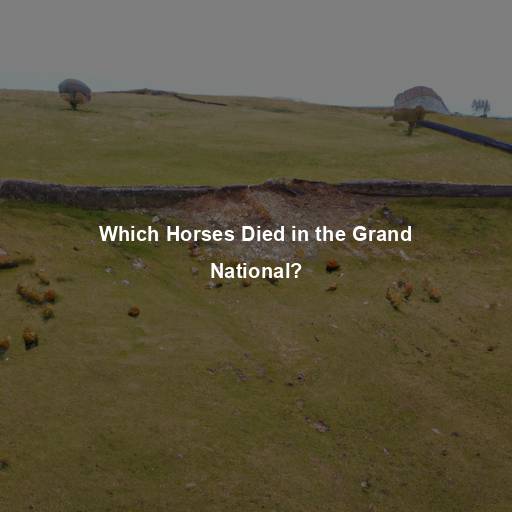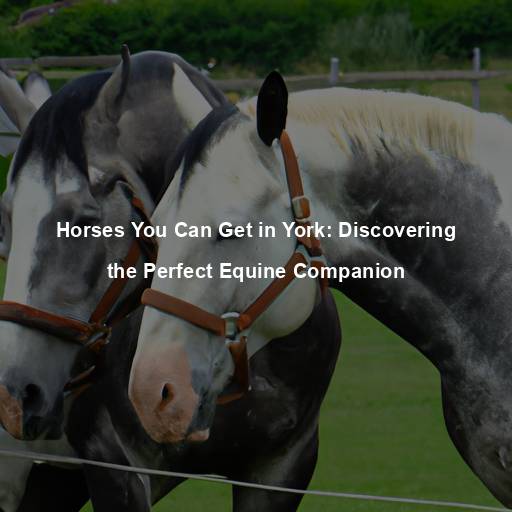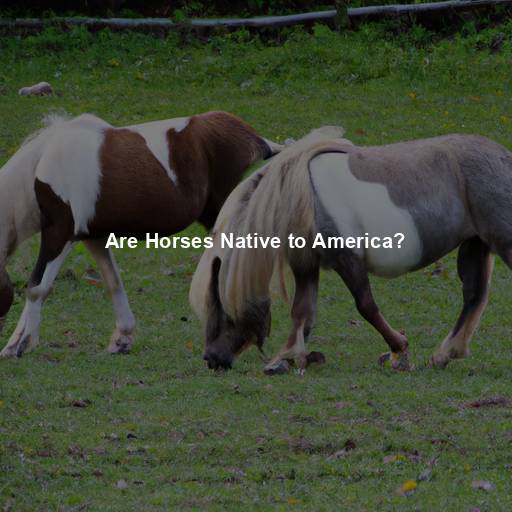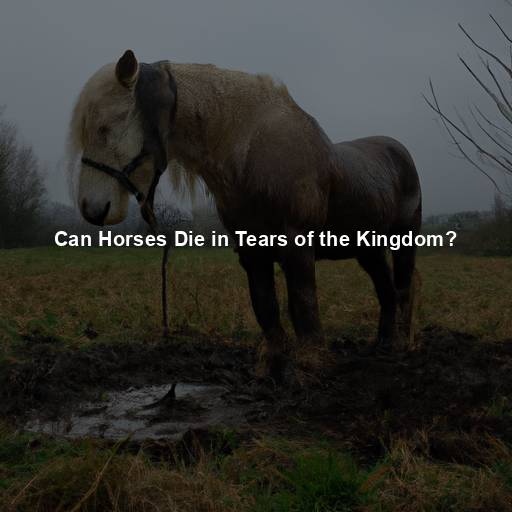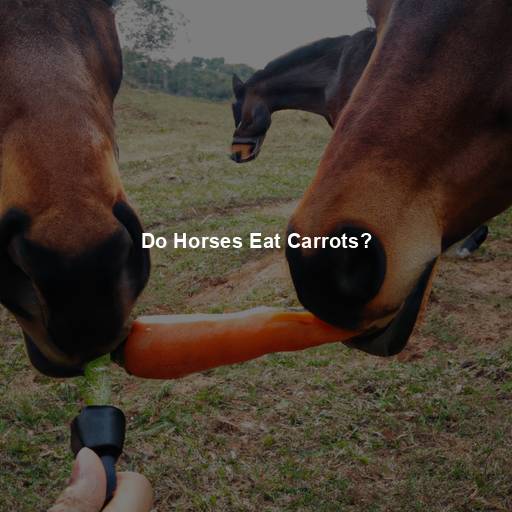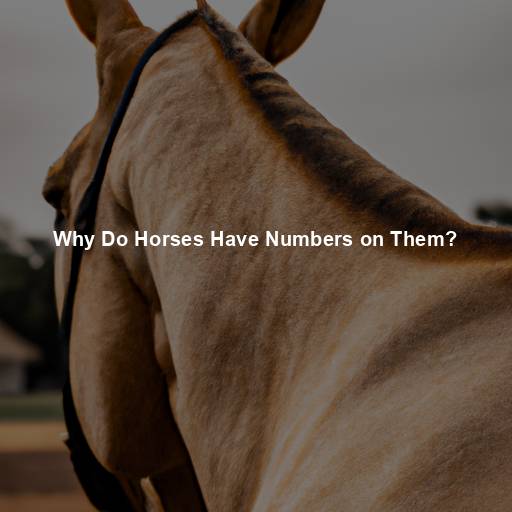Which Horses Died in the Grand National?
Last Updated on July 28, 2023 by Evan
Contents [hide]
- 1 An In-Depth Look at the Tragic Losses in this Historic Horse Racing Event
- 1.1 The Grand National: A Historic Event
- 1.2 The Inherent Risks in Horse Racing
- 1.3 The Tragic Incidents: A Closer Look
- 1.4 Safety Measures and Improvements
- 1.5 A Sport of Passion and Controversy
- 1.6 Risk Mitigation: A Continuous Journey
- 1.7 The Role of Racecourse Design
- 1.8 Ethical Considerations: Balancing Competition and Welfare
- 1.9 The Future of Horse Racing: Striving for Perfection
- 1.10 A Sport That Evolves
- 2 FAQs – Which Horses Died in the Grand National
- 2.1 What is the Grand National?
- 2.2 Have any horses died in the Grand National?
- 2.3 How many horses have died during the Grand National?
- 2.4 Can you provide examples of horses that died in the Grand National?
- 2.5 What measures have been taken to improve horse safety during the Grand National?
- 2.6 Is horse welfare a priority during the Grand National?
- 2.7 How does the Grand National address public concerns regarding horse fatalities?
An In-Depth Look at the Tragic Losses in this Historic Horse Racing Event
The Grand National, a spectacle that never fails to captivate the world with its pulse-pounding horse racing action. The exhilaration coursing through the crowd, as majestic beings and jockeys push their limits on the unforgiving track, is truly a sight to behold. Nevertheless, behind this thrilling spectacle, there lies a somber undercurrent of heartbreak and sorrow, as history bears witness to the tragic loss of equine lives on these hallowed grounds. In this article, we dare to unveil the perplexing tales of horses whose destinies took a heartbreaking turn during the Grand National races throughout the years.
The Grand National: A Historic Event
Before we explore the unfortunate incidents, let’s take a moment to appreciate the significance of the Grand National. This prestigious steeplechase race, held annually at Aintree Racecourse near Liverpool, England, has a rich history dating back to 1839. It is a true test of endurance, with horses and jockeys tackling formidable obstacles over a distance of approximately four and a half miles.
The Grand National has witnessed countless moments of triumph and celebration, with legendary horses etching their names in the annals of horse racing history. However, it is important to acknowledge that this event, like any other, carries inherent risks for both horse and rider.
The Inherent Risks in Horse Racing
Horse racing, whether it be the Grand National or any other race, involves inherent risks. The speed, power, and unpredictability of these animals make it a dangerous sport. While stringent safety measures are implemented to minimize the risks, tragic accidents can still occur. It is crucial to remember that these incidents are the exception rather than the norm, and the welfare of the horses is of paramount importance to the organizers.
The Tragic Incidents: A Closer Look
Throughout the eventful history of the Grand National, the equestrian world has witnessed a series of heart-wrenching moments that have cast a shadow on this exhilarating sport. These incidents serve as poignant reminders of the inherent perils faced by both horses and jockeys alike. As we embark on this reflective journey, let us explore some of the unforgettable chapters that have left lasting imprints on the racing community’s collective consciousness.
The Death of Devon Loch (1956)
In the annals of the Grand National, an event trembling with anticipation and enchantment, one particular year stands out as a testament to the capricious nature of fate. Picture the scene: the year was 1956, and Devon Loch, gallantly carrying jockey Dick Francis, seemed destined for glory. Victory was within their grasp, tantalizingly close, until the laws of chance intervened with a merciless twist. In a burst of inexplicable misfortune, Devon Loch stumbled, collapsing upon the hallowed turf, leaving spectators bewildered and hearts shattered.
The Fatal Fall of Dark Ivy (1991)
In a chilling turn of events, the 1991 Grand National bore witness to a heart-wrenching incident at the treacherous Becher’s Brook fence. Mounted by the skilled jockey Mark Dwyer, Dark Ivy’s fateful fall sent shockwaves through the racing world. Despite the swift intervention of veterinary professionals, the gallant steed succumbed to his injuries, injecting a dose of cruel reality into the high-stakes event. This heart-wrenching episode serves as a poignant reminder of the inherent perils that lurk within the formidable course, underscoring the indispensible quest for safeguarding the well-being of our beloved equine athletes and their riders.
The Loss of Ornais (2011)
The 2011 Grand National witnessed an unforeseen turn of events that left everyone in a state of disarray. Tragically, Ornais, under the guidance of jockey David Condon, met an untimely demise during the fateful race. As the horse stumbled at the treacherous Becher’s Brook, the weight of sorrow descended upon the competitors and spectators alike. Despite the valiant efforts of the veterinary team, Ornais’s injuries proved insurmountable, casting a somber shadow over the proceedings.
Safety Measures and Improvements
In light of these tragic incidents, significant efforts have been made to enhance safety measures during the Grand National and other horse racing events. The welfare of the horses is a paramount concern, and organizers continuously work to minimize risks and improve the overall safety standards.
Safety Modifications
In light of the aforementioned events and various unanticipated episodes over time, Aintree Racecourse has taken decisive actions to enhance safety measures on the Grand National course. By introducing a series of meticulous modifications to the fences and landing areas, the racecourse aims to create a more forgiving environment and minimize the likelihood of severe injuries. These precautionary adjustments stand as a testament to Aintree’s commitment to the well-being of both jockeys and horses.
Veterinary Care
When it comes to the well-being of our equine companions at Aintree Racecourse, prompt access to quality veterinary care is absolutely paramount. Recognizing this, the racecourse has made commendable efforts to enhance their veterinary facilities and staff, assuring that injured horses are met with expert care right when they need it. This dedicated investment underscores their commitment to the welfare of these magnificent animals, leaving no room for doubt or delay in attending to their needs.
Regular Assessments
When it comes to the Grand National, the organizers go above and beyond to ensure the utmost safety for both horses and jockeys. In their quest for excellence, they meticulously inspect every nook and cranny of the course, meticulously assessing everything from the fences to the ground conditions. They leave no stone unturned, striving to identify any room for improvement and promptly taking action where necessary. Their unwavering dedication to track safety is truly commendable.
A Sport of Passion and Controversy
The thundering hooves, the adrenaline-fueled cheers; horse racing has long held a place in the hearts of passionate fans worldwide. However, this beloved sport has not managed to escape the swirling cloud of controversy. Detractors raise their voices, arguing that the dangers lurking within events like the illustrious Grand National far outweigh any sense of reward. But amidst the cacophony of differing opinions, there is a glimmer of hope as the industry strives to strike a delicate balance between the thrill of the race and the welfare of these majestic creatures.
Risk Mitigation: A Continuous Journey
Safety Research and Development
The racing industry invests significant resources in research and development to enhance safety measures. Experts continually study horse anatomy, biomechanics, and injury patterns to identify potential risks and develop strategies to minimize them. This scientific approach allows for evidence-based decision-making in improving track surfaces, equipment, and racecourse design.
Jockey Training and Regulation
Ensuring the well-being of our noble equine companions and their fearless jockeys stands as an unwavering priority. Immersed in the world of jockey training, these meticulous programs go beyond simply refining riding prowess, delving into the intricate realms of hazard evaluation and unwavering vigilance. Upholding the highest standards, rigorous regulations and thorough licensing procedures ensure that the hallowed racetracks are graced solely by skilled and seasoned equestrian daredevils.
The Role of Racecourse Design
Fence Modifications
When it comes to ensuring safety in the Grand National, modifications to the iconic fences take center stage. These fences, with their individuality and historical significance, have witnessed heartbreaking moments over the years, notably at the infamous Becher’s Brook. To address these concerns, organizers have taken proactive measures by introducing new designs that prioritize safety. Incorporating forgiving materials and enhanced landing areas, these alterations contribute to minimizing the impact of falls and injuries, leaving jockeys and spectators alike feeling more at ease.
Assessment and Feedback
When it comes to the racecourse, the officials know that safety is paramount. That’s why they make it a priority to work hand in hand with the jockeys and trainers, creating a collaborative environment where everyone’s opinions matter. By constantly gathering feedback and assessing the course’s safety, they strive to make ongoing improvements that strike the perfect balance between challenge and security, making sure all participants can enjoy the thrill of the race with peace of mind.
Ethical Considerations: Balancing Competition and Welfare
Transparency and Accountability
As society becomes more attuned to the well-being of animals, the racing world is finding itself under a piercing lens, with questions about how horses are treated taking center stage. In response, governing bodies like the British Horseracing Authority (BHA) are stepping up to the plate, imposing a string of stringent rules and standards on trainers, owners, and jockeys. By promoting openness through horse health records, extensive drug testing, and post-race veterinary evaluations, the industry aims to cultivate a culture of responsibility, showcasing an unwavering commitment to preserving the horses’ welfare above all else.
Retirement and Rehoming Programs
The racing industry acknowledges its responsibility to provide a dignified and comfortable retirement for horses that are no longer fit for racing. Retirement and rehoming programs, funded by industry contributions, aim to find suitable homes and second careers for these magnificent animals. These initiatives emphasize the lifelong commitment to horse welfare beyond their racing years.
The Future of Horse Racing: Striving for Perfection
Continuous Improvement
The world of horse racing, including the prestigious Grand National, is in a constant state of evolution. With an unwavering commitment to safety and ethics, the industry seeks to embrace new horizons. Collaborating with esteemed veterinary experts, equine scientists, and animal welfare organizations, these races strive to stay at the forefront of cutting-edge research and implement best practices. Embracing the idea of incessant improvement, the racing community ensures that the sport remains sustainable and brings joy to all who partake in it.
Public Engagement and Education
It is of utmost importance to shed light on the tireless endeavors undertaken to minimize risks and put horse welfare at the forefront in the world of horse racing. By actively involving the public in educational programs, organizing open days at racing yards, and launching initiatives that promote responsible gambling, we can dismantle the prevailing misconceptions surrounding the sport. These efforts will not only deepen our understanding of horse racing but also underscore its unwavering dedication to the well-being of the magnificent creatures involved.
A Sport That Evolves
Come witness the exhilarating spectacle that is the Grand National, where the raw power and grace of horses merge with the ever-evolving quest for harmony between competition and welfare. Although the occasional heartbreaking moments may leave us pondering the delicate balance, they ignite a transformative fire within the racing community, propelling them towards progress and growth. Armed with a shared dedication to research, a spirit of collaboration, and an unwavering commitment to transparency, the world of horse racing embarks on a relentless pursuit to forge a future that safeguards the well-being of horses and participants alike. Brace yourself for a mesmerizing journey that encapsulates the mystery, intensity, and resilience encapsulated in this captivating sport.
As the enchanting world of horse racing beckons us towards its upcoming editions, it is time to revel in the remarkable fortitude and unwavering commitment exhibited by the remarkable individuals who strive day and night to transform this sport into a poignant testament of the profound connection between humans and horses. The Grand National, with its exhilarating spectacles and high-stake gambles, urges us to ponder upon the intricate measures taken to mitigate risks and uphold the ethical standards synonymous with this riveting pursuit. Let us embark on a journey through the labyrinth of uncertainties, where triumphs and tribulations interweave, leaving us both breathless and astounded.
FAQs – Which Horses Died in the Grand National
What is the Grand National?
The Grand National is a renowned horse racing event that takes place annually in Aintree Racecourse near Liverpool, England. It is considered one of the most challenging steeplechases in the world, attracting a large global audience.
Have any horses died in the Grand National?
Unfortunately, throughout its history, there have been instances where horses have tragically lost their lives during the Grand National race. Horse racing, by nature, involves risks for both jockeys and horses, and despite safety measures implemented, accidents can still occur.
How many horses have died during the Grand National?
Throughout the history of the Grand National, the unfortunate toll on horse lives has fluctuated, leaving us in a state of chronic uncertainty. Some years have witnessed multiple equine tragedies unfold within a single race, shrouding the event in somber whispers. Yet, we must acknowledge the persistent efforts of racing authorities, striving to refine safety protocols and assuage the disquieting specter of risk that shadows this iconic race.
Can you provide examples of horses that died in the Grand National?
Throughout the storied history of the Grand National, a multitude of equine lives have been profoundly impacted, their tales forever etched in the annals of equestrian lore. Gathering an all-encompassing roster of these heart-rending occurrences proves a perplexing task, as the tapestry of losses stretches far and wide. Yet, amidst this tapestry lie solemn chapters featuring resolute steeds such as The Join Up, whose tale ended abruptly in 1951, Dooneys Gate, catapulted into eternity in 2011, and Synchronised, a fallen hero whose name resonates still from the fateful race in 2012. The specter of these incidents casts a poignant light on the enigmatic interplay between the thrill of the race and the devastating consequences faced by these majestic creatures.
What measures have been taken to improve horse safety during the Grand National?
Over the years, considerable efforts have been made to enhance horse safety during the Grand National and other horse racing events. Racing authorities work closely with veterinarians and industry professionals to continually evaluate and update safety protocols. These include improving fence construction, adjusting race distances, and implementing stricter welfare regulations. The aim is to prioritize the well-being of the horses while maintaining the integrity and excitement of the sport.
Is horse welfare a priority during the Grand National?
Ensuring the well-being of our equine friends remains at the forefront of the Grand National’s agenda. Collaborating seamlessly, the guardians of horse racing commence a meticulous orchestration of safety measures to mitigate the uncertainties that may arise. This intricate dance between racing authorities and event organizers is founded upon a steadfast commitment to constant reflection and adaptation, utilizing the latest research and industry insights to fortify their protocols. By doing so, they diligently strive towards a harmonious balance between the thrill of competition and the utmost care for these majestic creatures.
How does the Grand National address public concerns regarding horse fatalities?
Public concerns regarding horse fatalities in the Grand National and horse racing, in general, are taken very seriously. Racing authorities actively engage with the public and organizations dedicated to horse welfare. They invest in research and development to advance safety measures and continue to promote transparency and accountability. These efforts help address concerns and demonstrate the commitment to improving horse welfare in the sport of horse racing.

